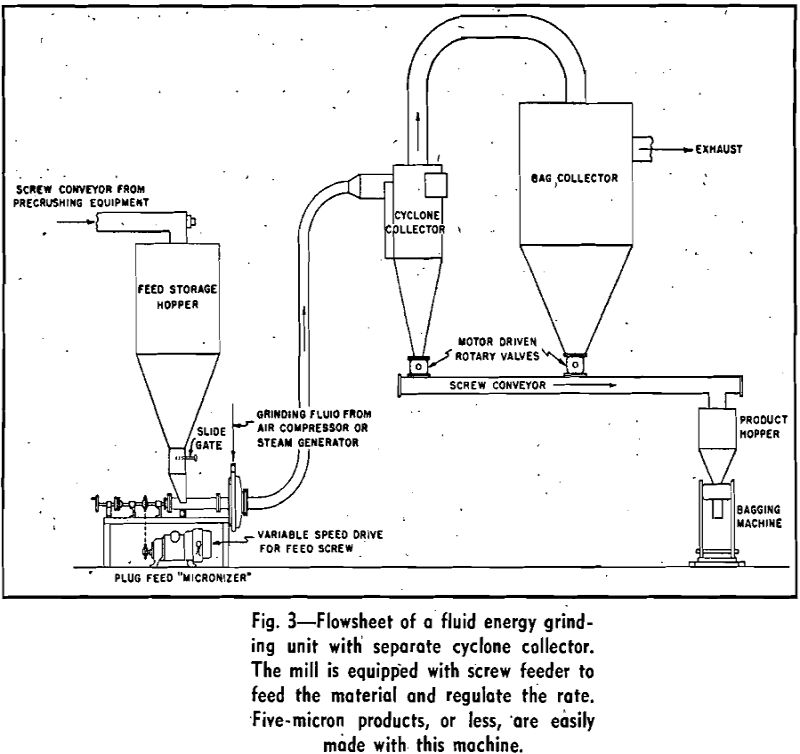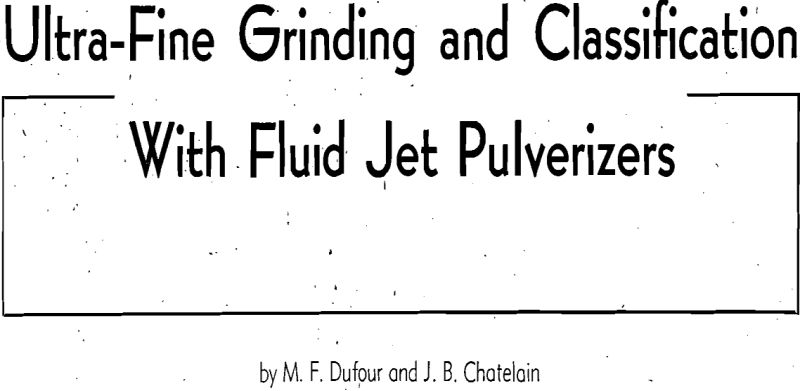Fluid jet mills-employing a compressible fluid to grind materials to the sub-sieve range, was developed in the early 1930’s, and the subsequent acceptance of these units was the result of their ability to pulverize solids that, because of physical properties, could not be processed by other attrition methods, such as ball, pebble, and hammer mills. Also, the fluid energy pulverizer is the only grinding device that will discharge continuously a 5-micron or smaller product. Simultaneous ultra-fine grinding and classification is the widest application of this unit. Jet mills may be used to advantage to reduce particle size of solids suspended in liquids, for coating one material with another, and effecting chemical reactions and changes in physical characteristics other than a reduction in size.
Ore is reduced in size within the mill by both impact of particles with each other and against the walls of the mill. The material when reduced to the size to meet the conditions within the mill exits with the spent fluid and enters two cyclones connected in tandem, each of which produces a product of different particle size.
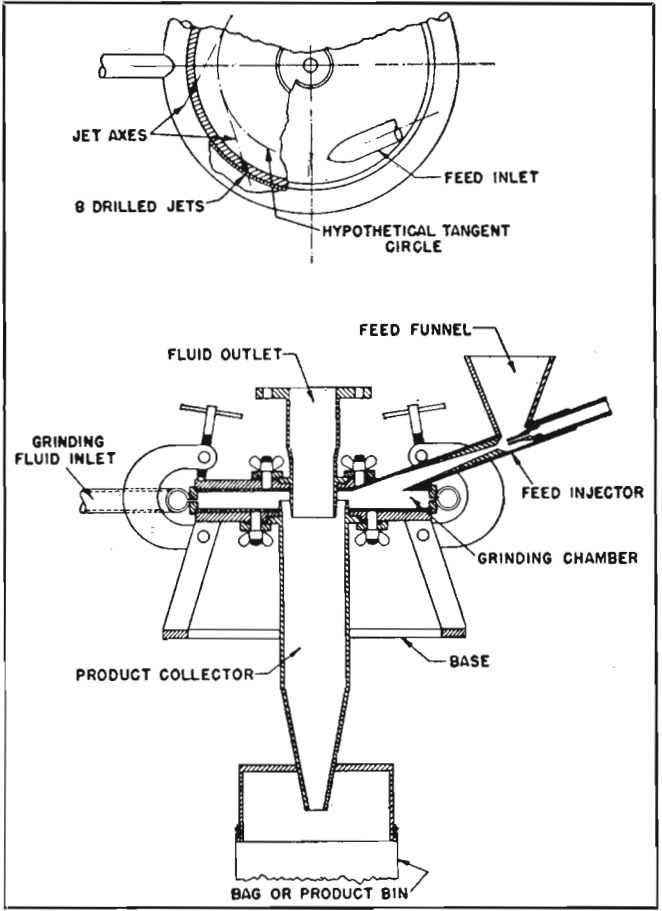
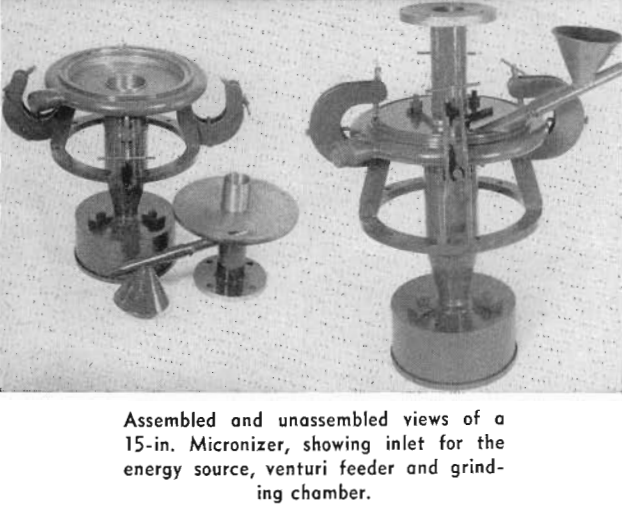
Grinding energy for most commercial installations is supplied in the form of compressed air at 100 lb per sq in. and at temperatures ranging from below atmospheric to 700°F, or steam at pressures from 100 to 200 lb per sq in. and temperatures ranging from 400°F to 1000°F. The volume of compressed fluid required to grind a unit weight of material is, in general, proportional to the kinetic energy of the fluid supplied.
Micronizers are rated according to the inside diameter of the grinding chamber which varies from 2 to 30 in. The height of the grinding chambers at
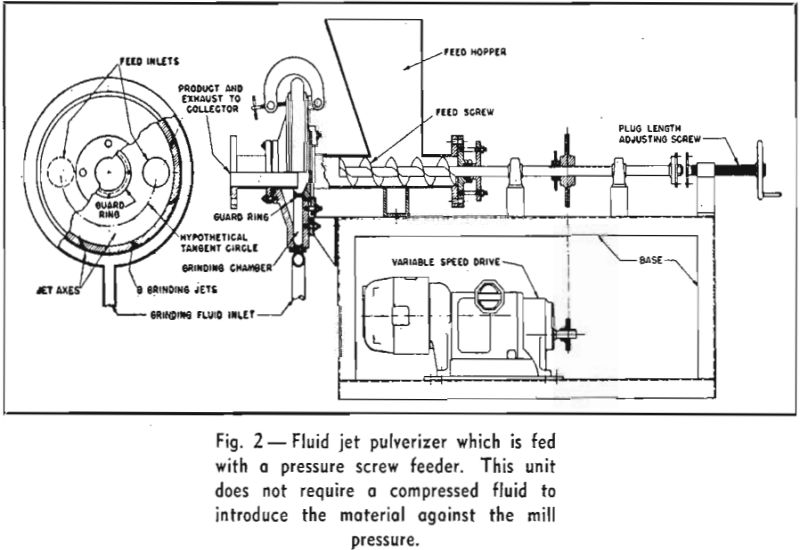
the periphery may vary from 3/8 in. to 2 in. The number of grinding jets will usually range from 3 to 24, this and other features of construction varying according to the material to be ground and the results desired.
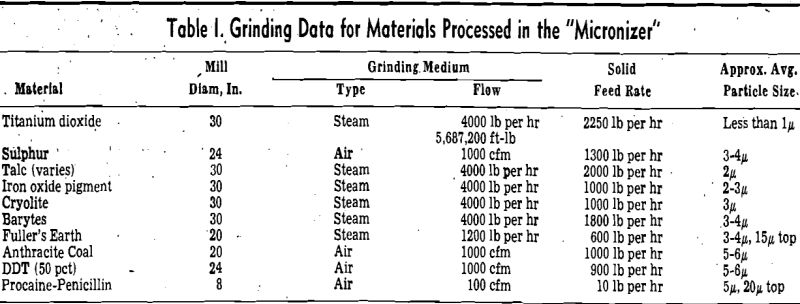
The major processing cost in fluid jet pulverizers is energy. The cost of energy will vary depending on the material processed, the size of the feed, product specifications and the cost of fuel or electrical energy.
Solids 4 mesh or larger are being processed in the larger sizes of jet mills. The only limitation is that the feed be of such a size that it will not plug the feed mechanism. However, it is normally advantageous to precrush to at least 10 mesh and in some cases to 100 and 200 mesh.
